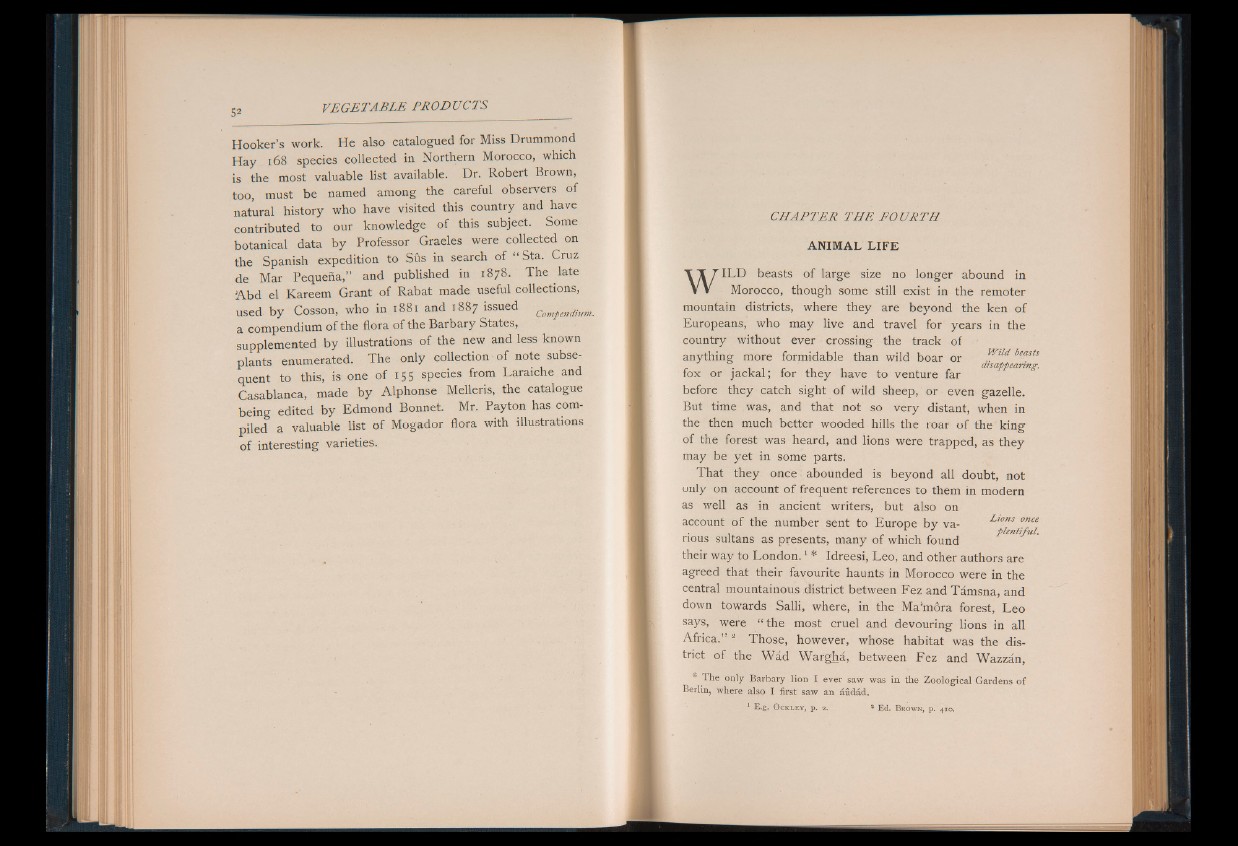
Hooker’s work. He also catalogued for Miss Drummond
Hay 168 species collected in Northern Morocco, which
is the most valuable list available. Dr. Robert Brown,
too, must be named among the careful observers of
natural history who have visited this country and have
contributed to our knowledge of this subject. Some
botanical data by Professor Graeles were collected on
the Spanish expedition to Sus in search of “ Sta. Cruz
de Mar Pequeña,” and published in 1878. The late
A b d el Kareem Grant of Rabat made useful collections,
used by Cosson, who in 1881 and 1887 issued Compmdium.
a compendium of the flora of the Barbary States,
supplemented by illustrations of the new and less known
plants enumerated. The only collection of note subsequent
to this, is one of 155 species from Laraiche and
Casablanca, made by Alphonse Melleris, the catalogue
being edited by Edmond Bonnet. Mr. Payton has compiled
a valuable list of Mogador flora with illustrations
of interesting varieties.
CH A PTER TH E FO U R TH
ANIMAL LIFE
WILD beasts o f large size no longer abound in
Morocco, though some still exist in the remoter
mountain districts, where they are beyond the ken of
Europeans, who may live and travel for years in the
country without ever crossing the track of
anything more formidable than wild boar or beasts
. . . disappearing.
fox or jackal; for they have to venture far
before they catch sight of wild sheep, or even gazelle.
But time was, and that not so very distant, when in
the then much better wooded hills the roar of the king
of the forest was heard, and lions were trapped, as they
may be yet in some parts.
That they once abounded is beyond all doubt, not
only on account of frequent references to them in modern
as well as in ancient writers, but also on
account of the number sent to Europe by va- Lw,ts once
plentiful.
rious sultans as presents, many of which found
their way to London.1 * Idreesi, Leo, and other authors are
agreed that their favourite haunts in Morocco were in the
central mountainous district between Fez and Tamsna, and
down towards Salli, where, in the Ma’mora forest, Leo
says, were “ the most cruel and devouring lions in all
Africa.” 2 Those, however, whose habitat was the district
of the Wad Wargha, between Fez and Wazzan,
The only Barbary Hod I ever saw was in the Zoological Gardens of
Berlin, where also I first saw an aiidad.
1 E -g - O c k l e y , p . 2 . a E d . B r o w n , p . 4 10 .